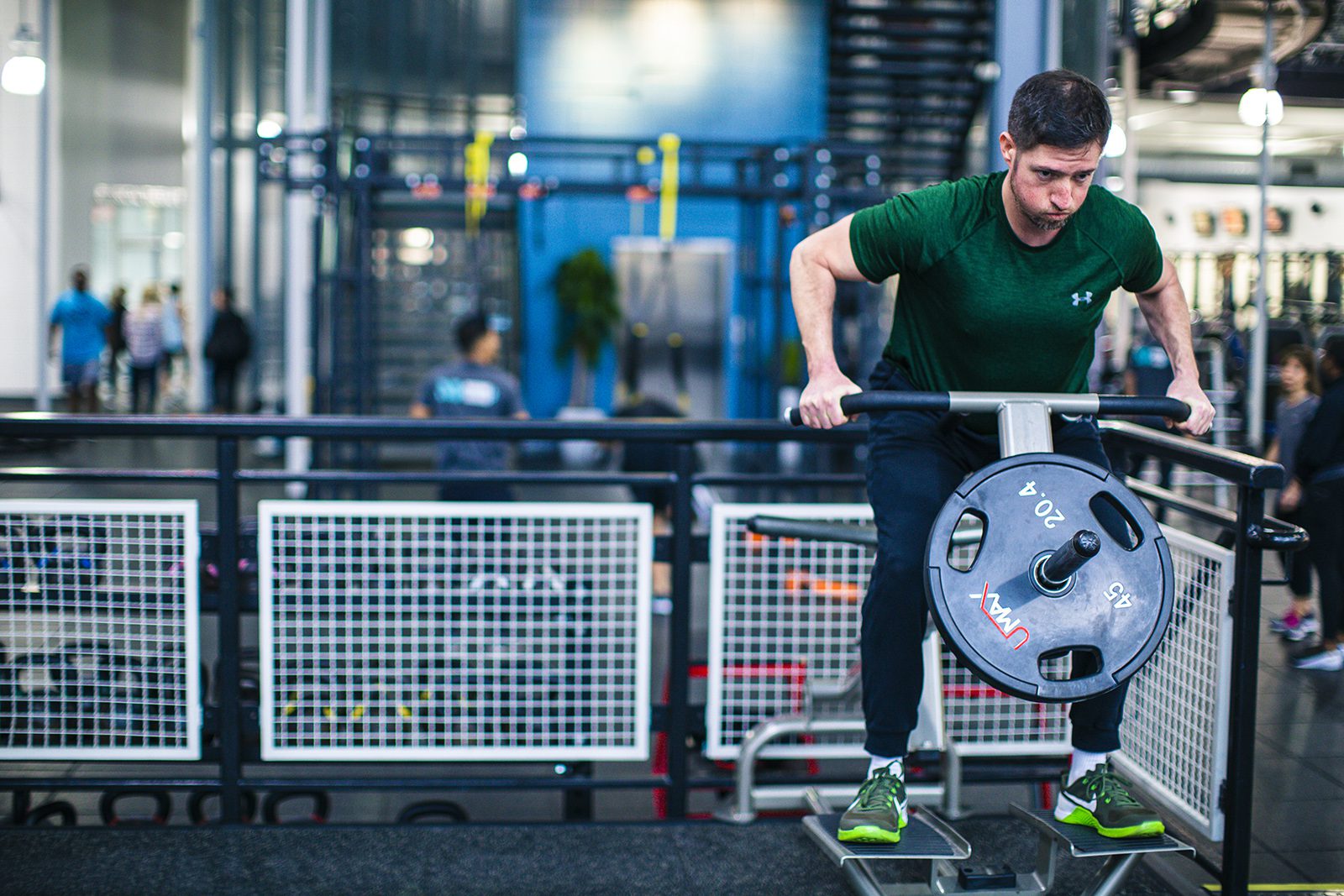
How do you know if you’re getting stronger in the gym? Most of us are aware that over time, we have to increase our weight and/or reps, but how do we know how much weight to add, and when to add it?
Progressive overload is the idea of gradually increasing the intensity of your workouts over time by modifying the acute variables of the workout (weight, sets, reps, duration, rest, etc.) A gradual increase in intensity prevents a lull in muscle growth while promoting muscular hypertrophy (Adams, 2021).
And what is muscular hypertrophy? Typically with a rep range between 8-12 for 3-5 sets, training for muscular hypertrophy is training for muscle growth. When the goal is to increase muscle mass, the amount of resistance chosen is important. If you can easily complete 12 repetitions of an exercise for 3 sets, this might be a signal to increase the resistance level. If you can barely complete one set of 8 repetitions, you’ll likely need to decrease the weight. In order to continue to challenge your muscles each week, intensity should be increasing over time.
So now we know that increasing intensity is integral to muscle growth, but how much should we be increasing at a time? Before you add another plate on the bar, take note of the 10% rule. In summary, the 10% rule says that the intensity of your workout should increase by no more than 10% each week (Adams, 2021). For some, 10% might be too much to add each week, and that’s okay! As long as you’re steadily increasing the intensity and challenging yourself, you’ll be on your way.
Benefits of Progressive Overload
In order to make progress within any training program, the body must constantly be challenged and broken down in order to recover and adapt so that it can handle the new resistance being placed. This principle is what makes the idea of progressive overload so important. By following progress overload, many people have seen improvements within athletic specific training, weight loss, etc. One of the biggest testimonies to progressive overload is body re-composition.
When thinking of progressive overload, you must remember its purpose is to break down the body. However, breaking the body down too much can result in injury or long-term complications. Here are some rules to follow when trying to perform progressive overload:
Rule #1 – To safely progress an exercise, make sure you are properly performing it. If the exercise is not being performed properly certain aspects of the body may over compensate, resulting in injury. If you’re not sure about your form, personal trainers are a great addition to help you correct or maintain form.
Rule #2 – When progressing a workout it’s important to do it gradually. If you try to make drastic progressions you run the risk of injury due to your body not being able to handle the excessive stimulus that you have placed amongst it. One of the safest ways to progressively overload is to increase the stimulus at most. 5%-10%. For example, if you’re looking to progress your 10-repetition max of 135 lbs., the safest method would be to increase the weight to a 10-repetition max of 141. Of course, you may not be able to get 10 repetitions of 141 lbs. Off the bat, the safe thing to do is do as many as you feel safe and comfortable doing so.
Rule #3 – When doing progressive overload, it is important to know your limits and have a spotter if trying to push closer to those limits. During progressive overload you are typically working at pretty intense level of exertion. This amount of exertion can result in a period of fatigue which can contribute to one potentially failing on their attempt. In order to prevent injuries from occurring due to muscular fatigue and failure on a barbell, having someone to spot you will be a great resource. If you are unable to find someone to spot you, safety racks and pins are great mechanical spot you can use.
References:
Adams, A. (2021, July 16). Progressive overload explained: Grow muscle & strength today. blog.nasm.org; National Academy of Sports Medicine. https://blog.nasm.org/progressive-overload-explained
Gay, C. (2018, April 24).Progressive overload: Get stronger in a healthy way. mayoclinichealthsystem.org; Mayo Clinic Health System. https://www.mayoclinichealthsystem.org/hometown-health/speaking-of-health/progressive-overload-get-stronger-in-a-healthy-way
Shannon McGoey, CPT is a personal trainer at Merritt Clubs Eldersburg.
Lameak Barrett, CPT is a fitness team leader at Merritt Clubs Downtown.




